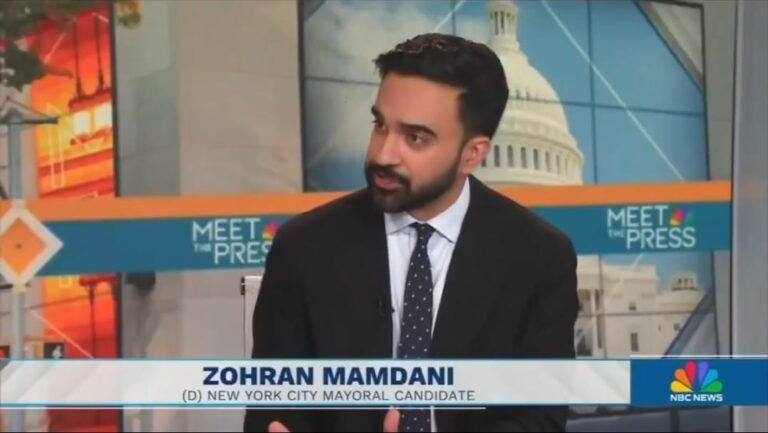 [By Rabbi Yair Hoffman]
[By Rabbi Yair Hoffman]
BACKGROUND OF THE DISH
The origin of this halachic question takes place in Western Europe—more specifically in Rome, Italy, in the year 1914. An Italian woman, who is expecting, is constantly nauseated and cannot hold down any food. Her husband, a certain Mr. di Lellio, happens to be a master chef. He invents a dish that his wife will be able to hold down. Mrs. Di Lellio succeeds in holding down her food and her husband introduces the dish in his restaurant. The restaurant is a favorite of American tourists in Italy. And the new dish? A halachic question arises about this dish that will affect restaurants today, throughout the United States.
The dish Mr. di Lellio created was a pasta dish tossed with butter, heavy cream, and Parmesan cheese. By now most people will have guess that di Lellio’s first name is Alfredo. Our dish, of course, is called Fettuccine Alfredo.
Thirteen years pass.
Soon the dish gets discovered. Hollywood actors Douglas Fairbanks and Mary Pickford marry and travel to Rome for their honeymoon in 1927. They bring the dish back home to Hollywood, and Fettuccine Alfredo becomes world-famous.
What is the halachic question?
Fettuccine Alfredo contains Parmesan cheese. Even the cheaper imitations of this brand of cheese that are made in the United States still qualify as a hard cheese. After consuming hard cheeses, it is the custom of most Ashkenazic Jews to wait six hours before we can consume meat. Regarding the consumption of Parmesan-laden pizza, it is clear that we must wait six hours.
Will this be true regarding fettuccine Alfredo too?
Let’s explore the background of this halachah. We will begin with the issue of consuming dairy after consuming meat.
DAIRY AFTER MEAT
The Talmud (Chullin 105a) tells us that Rav Chisda says: One who ate meat is forbidden from eating cheese. One who ate cheese [however] may eat meat. It further explains that Mar Ukvah differentiated his behavior from the more pious behavior of his father. He stated, “Although I would not eat cheese in the same meal as meat, I would eat cheese in the next meal.”
Most poskim conclude that unless one has a specific minhag otherwise, the time period meant by the term “the next meal” is six hours. There are two major opinions that deal with the reason for this six-hour timeframe of Mar Ukvah.
RASHI VERSUS RAMBAM
Rashi (Chullin 105a) explains that meat leaves a fatty type of residue in the mouth and throat of the meat consumer. This residue lasts a rather long time.
The Rambam (Hilchos Basar VeChalav 9:28) explains that there are particles of meat that can park themselves in between the teeth. We rule in accordance with both Rashi and the Rambam in regard to this issue.
MEAT AFTER DAIRY
Yes, but what about eating meat after one eats cheese? The Gemara seems to say that it is permitted to eat cheese after eating meat, without qualification. The Rama rules (Yoreh Deah 89:2) that it is good [and proper] to be stringent and follow the opinion to not eat meat, or even poultry, within six hours after consuming any hard cheese. This has become the accepted minhag of K’lal Yisrael, according to the Mishnah Berurah.
As the TaZ (89:4) explains, hard cheese leaves a fatty residue just as meat does. The P’ri Chadash 89:2 explains that pieces of cheese can park themselves in between the teeth just as pieces of meat do. What cheeses are included? Parmesan, cheddar, and Swiss are a few. Indeed, even if just a small amount of these cheeses are consumed, such as on top of a pizza or on top of a salad, one must wait the six-hour period.
FETTUCCINE ALFREDO
What about our Fettuccine Alfredo? To answer this question, we must travel back even earlier than 1914. We travel to Eastern Europe, and it is 1906 – eight years prior to the pregnancy of Mrs. di Lellio.
The town is Sadigora, in the Austro-Hungarian Empire. It is the seat of the famed Sadigora Chassidic dynasty (centered in Bnei Brak, Israel in modern times). The town’s av beis din, Rabbi Yehudah Leibish Landau, publishes a remarkable work, Yad Yehudah, a commentary on the kashrus section of Yoreh Deah.
Rabbi Landau writes (Yad Yehudah 89:30) that this stringency does not apply if the cheese is cooked into the food.
The Parmesan cheese is added to the recipe as part of the sauce before it is cooked. Thus, according to the Yad Yehudah, Fettuccine Alfredo is not considered a six hour cheese product. Thus , the fleishigs after the fettuccine Alfredo is safe.
RAV FEIVEL COHEN’S OPINION
But wait. Rav Feivel Cohen, shlita, in his Badei HaShulchan (Hilchos Basar VeChalav chapter 89, page 64 in the Biurim section) questions this ruling. He writes that the Yad Yehudah is of the opinion that hard cheese is forbidden because of the parking of pieces in between the teeth (like the aforementioned P’ri Chadash). There, it is quite reasonable to assume that the cheese will soften after it is cooked. But perhaps the real reason for hard cheese being forbidden is Rashi’s reason – that the taste of its fat remains in the mouth (like the aforementioned TaZ).
Rav Feivel Cohen concludes his thoughts with the words “tzarich iyun.”
So, what should Fettuccine Alfredo consumers do? The va’adei kashrus across the country seem to go with the opinion of the Yad Yehudah and do not necessitate even a warning label that it may require a waiting period of six hours.
There may be another factor, however, allowing a leniency. Here, the Parmesan cheese is mixed with other things in the sauce and then it is cooked. Perhaps the mixing, combined with the cooking, will somehow weaken the taste of that Parmesan cheese.
I am told, however, that when this rationale was presented to Rav Elyashiv zatzal, it was rejected. The mixing of hard cheeses with other cheese does not mitigate the cheese, according to Rav Elyashiv. If so, this may open up a Pandora’s box of other hard-cheese kashrus concerns. It seems that our orange cheeses (American cheese) get their color not just from orange food coloring added to a mixture of cheeses; there is bona fide cheddar cheese in there. If this quote of Rav Elyashiv is correct, then some very serious questions can arise.
This article is merely bringing up the issue. As in all areas of halachah, one must always consult one’s Rav as to how to conduct oneself. It is my understanding that many Rabbonim do follow the view of the Yad Yehudah especially when there are the other factors presented above.
The author can be reached at [email protected]











15 Responses
How about the Parmesan Cheese that isn’t aged six months (which – to the best of my knowledge – is the divider between soft & hard cheese), which would not be considered hard cheese?
There are actually those who hold that once a hard cheese is melted, even if it’s not mixed with other ingredients, you no longer have to wait 6 hours. This opinion is mentioned in an article by the OU on waiting after cheeses (mods, can a link to the OU website be allowed? http://oukosher.org/blog/consumer-kosher/are-all-fromages-created-equal-waiting-between-cheese-and-meat/ )
This is actually the opinion that my Rav follows.
Rabbi Hoffman states about the 6 hour restriction of eating meat after hard cheese, “This has become the accepted minhag of K’lal Yisrael.” The Bais Yosef in Orach Chaim 173 says you can eat meat right after cheese and that is how all sefardic achronim including rav ovadia hold (allowing meat immediately after hard cheese) and how all sefardic people practice. So is it that he does not consider sfardim to be part of klal yisroel or is it that he forgot Mishlei 1:8?
It seems that Rav Ovadiah Yosef (Yechaveh Da’at 3:58) rules that there is no need to wait after eating cheese, and if someone had no strong custom to do so or if they decided that it was not logical to do so, they could break their habit of doing so without having to go through the process of annulling their vow (the general mechanism necessary to break a custom that one has held at least three times on a consistent basis).
I believe that the above writers from Eidoth HaMizrach may not be aware that Yeshiva World news largely caters to an Ashkenazik audience. The above article says, fairly early on, that “it is the custom of most Ashkenazik Jews to wait 6 hours before we can eat meat.” It is implicit that those adhering to the Sefardi customs do not hold this way (otherwise there would have been no need to specify Ashkenazi). Furthermore, both the Rema and the Mishna Berura that are quoted are Ashkenazi poskim, cited to substantiate the prevailing (ashkenazi) minhag that is being discussed.
#3 and #4 – if you re-read what Rabbi Hoffman wrote, he was quoting the REMA that this is how ‘Klal Yisroel’ is Noheg. The REMA was an Ashkenazi and speaks only about the part of Klal Yisroel that he had contact with. It is well known that Sefardim do not necessarily keep all of the rulings of the REMA.
Clearly this whole article is only addressed to those (of us) that are Ashkenazim, and indeed, Rabbi Hoffman is an Ashkenazic Rav. He specifically says “After consuming hard cheeses, it is the custom of most Ashkenazic Jews to wait six hours before we can consume meat.”
So there is no Kasha here.
BTW – My Father-In-Law (OB”M) used to say “I don’t believe in Cheeses!”
Rabbi Hoffman gives a very informative and erudite overloo on this question of meat and cheese.However, he neglects to mention an important part of this puzzle, namely, what is considered HARD cheese. Poster 1 alludes to this fact and,indeed, it is a “pri megodim” that says that HARD cheese is only considered hard cheese after a six month maturing period. Today, about the only kosher cheese that fits this is parmesan. i would venture to say that all other cheeses on the market here in the US (not sure about Israel) are matured for a very short time,maximum ninety days. Hence, this question would not apply to, for example, pizza (soft cheese really) and only if you grate and sprinkle parmesan could that apply.
Let me get this straight.
Not eatingg uncooked milk and meat at the same meal is a “drabonon”.
Waiting six hours is essentially in the category of minhag.
Most poskim agree that waiting after cheese is a good chumra.
So we now have a tzarich iyun on top of a chumra on top of a minhag on top of a drabonon!
Do you wonder why I’m scratching my head trying to figure out the problem here?
In actuality Rav Elyashiv zt”l, along with many Poskim in Eretz Yisroel, was of the opinion that ALL cheese that requires a knife to cut it requires six hours afterwards, regardless of if it was cooked or melted afterwards. The Ben Ish Chai as well held this way. Rav Moshe Feinstein zt”l was of the opinion that cooking or baking the cheese would exempt one from waiting six hours and that many cheeses today are not considered hard cheese.
The only place i am aware of the chofetz chaim saying to wait six hours for hard cheese is in hilchos shvos and he makes no mention of minhig klal yisroel or not. he simply states wait six hours. the minhig klal yisroel part appears to have been added by rabbi hoffman. the ben ish chai also says its permitted (Year 2, Parshas Shlach 15). i take issue with rabbi hoffmans categorization of the minhig as minhig klal yisroel.
Sweet dreams are made of the cheese, who am I to diss a Brie. I Cheddar the world and the Feta cheese. Everybody is looking for Stilton.
silentmoshe: the Rema feels that one should wait after eating hard cheeses. What is the problem?
aspiringrabbi: Please indicate the sources. It seeems to me to be a big chumro- certainly not in line with the pri megodim (no meikel). The requirement of “cheese that requires a knife” is a misnomer. For example, feta cheese comes in blocks- that have to be cut- do you wait six hours? most cheeses can be broken up-without a knife- do you not have to wait six hours? I can understand hard cheeses that require grating (a la parmesan) but these are really aged, but cutting with a knife? don’t get it.
Is any cheese today technically considered cheese under the halchic definition? Most cheeses are produced using a vegetarian rennet and as such is not “real” cheese.
In response to comments made by 5 and 6, As English speaking Sephardim also visit this site, it would be useful and helpful if discussions on halacha and customs were to include views of Sephardi poskim where these differ. (even if just as a footnote)
It would add to every ones general knowledge enhance the topic.